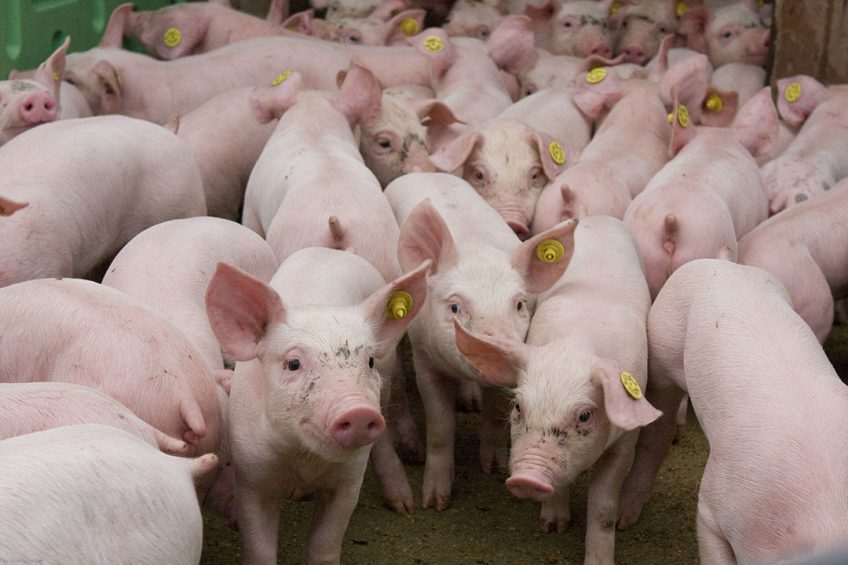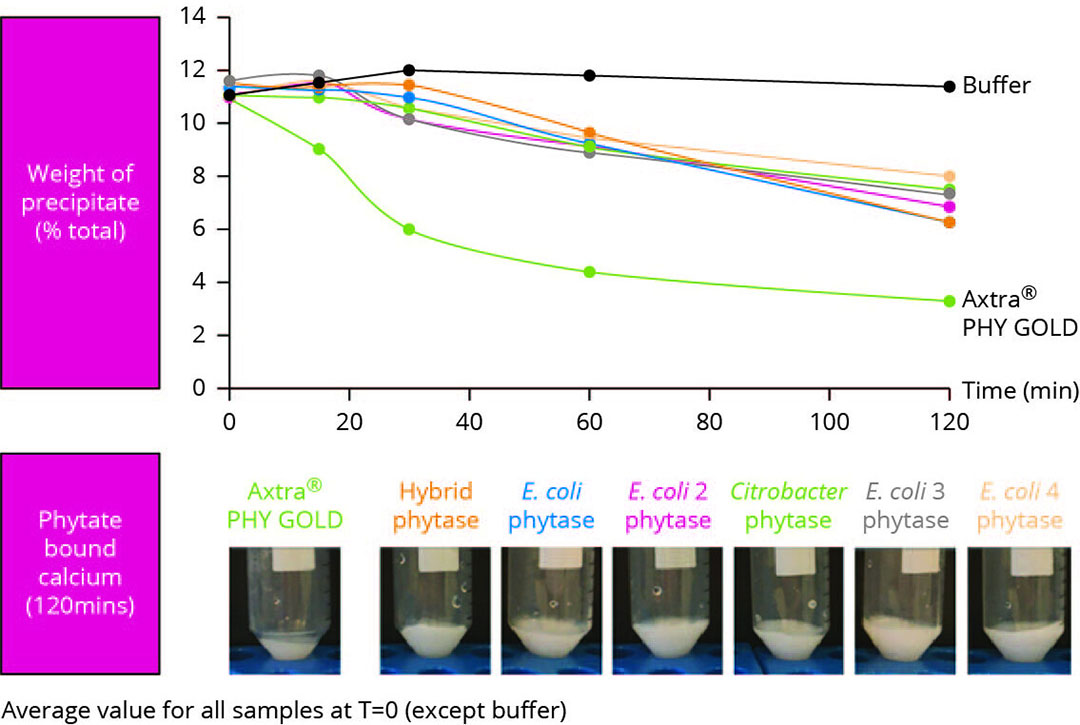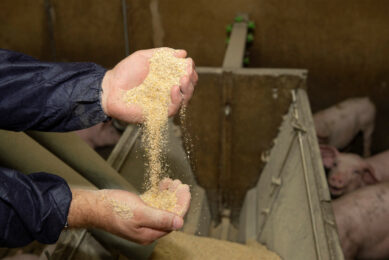Counteracting the anti-nutritional effects of calcium

Calcium and phosphorous are 2 vital minerals for animal development and function. Animal feeds are often over-supplemented with calcium, which negatively affects the activity of phytase and the availability of phosphorous. This can be overcome by supplementing the right phytase.
Calcium and phosphorous are crucial for growth, bone formation, muscle contraction, energy metabolism, reproduction, and immunity. Deficiencies in either mineral may directly limit growth performance and optimal bone development, ultimately leading to animal morbidity and mortality. To meet calcium and phosphorous requirements, these are supplemented in feed formulas. However, over-supplementation can result in homeostatic imbalance and improper bone development. Understanding the mechanisms of action of calcium and phosphorous and their interrelationship are, therefore, crucial to assess feed formulation requirements, adjust supplementation levels, and prevent the anti-nutritional effects of both minerals.
Calcium: The hidden anti-nutrient
Calcium is usually the mineral with the highest concentration in feed formulas. It is present in high amounts to ensure minimum requirements, but also because calcium sources are inexpensive and calcium excretion does not represent an environmental threat. However, high calcium levels can decrease the availability of other nutrients, including phosphorous (supplemented as phytate-phosphorous). Calcium facilitates the binding of phytate to proteins in the gut including digestive proteases (e.g. pepsin and trypsin) aggravating the anti-nutritional effects of phytate. These protein-phytate complexes are insoluble and poorly accessible to both proteolytic enzymes and phytase – the enzyme that degrades phytate in the gut. Excess calcium, therefore, reduces protein availability and digestibility, protein solubility, and phosphorous availability. In abundance, calcium also forms precipitates with fatty acids, thus decreasing dietary energy digestibility and phytate absorption. Although calcium has low affinity for phytate, its excess leads to the formation of insoluble calcium-phytate complexes in the small intestine, which are phytase-resistant. Thus, phytate becomes inaccessible for hydrolysis and the availability of both phytate-phosphorous and calcium is significantly reduced.
Not all calcium looks alike
Limestone is the primary source of dietary calcium in broilers, sometimes contributing to over 50% of the total. Limestone is readily available on the market, has a consistent calcium concentration, contains minor concentrations of pollutants, and it is cheap. Nevertheless, limestone’s acid-binding capacity increases the pH along the gut, which reduces phytate’s solubility and its accessibility to phytase, allowing calcium to form insoluble complexes with phytate. Moreover, the calcium in limestone may directly inhibit phytase activity by competing for the active sites of the enzyme.
Calcium concentration in the gut and its potential to bind to phytate increases with limestone solubility. Solubilization rates, and therefore the digestibility of phosphorous, varies among particle sizes: finer particles dissolve faster in the gut and, thus, have a greater negative impact on phosphorous digestibility. However, this effect is not linear and particle size alone does not explain all the variations in calcium availability according to limestone source. Other factors, such as the physical and chemical characteristics of the rock, might also play an important role. Therefore, to evaluate the impact of dietary calcium on phosphorous digestibility and properly formulate diets, the total calcium concentration in the diet as well as the limestone solubility need to be considered.
The role of phytase in minimising the anti-nutritional effects of calcium
Phytases are commonly added to monogastric feed formulas to partially or fully replace the need to add inorganic phosphorous. Phytases also reduce the negative impact of excessive calcium supplementation on the digestibility of amino acids and phosphorous. This ability depends both on phytase-related factors, such as its specific pH range of action and supplementation dose, as well as on dietary-related factors, including dietary calcium levels and calcium-phosphorous ratios. As calcium binds phytate more easily with increasing pH, phytase has limited time to act upon phytate and release phosphorous before phytate becomes unavailable. A fast-acting phytase with superior pH profile can therefore increase phytate hydrolysis in the gut, quickly releasing phosphorous for absorption and reducing the formation of insoluble calcium-phytate complexes. Axtra PHY GOLD, a consensus bacterial 6-phytase variant, is highly active at low pH (2.5−4.0). It breaks down phytate quickly in the gizzard and proventriculus, hydrolysing it before entering the small intestine, which results in less insoluble calcium-phytate complexes. Compared to competitor phytases, this phytase showed greater ability to hydrolyse phytate in the presence of calcium, thereby reducing the negative impact of this mineral (Figure 1).
Figure 1 – In vitro hydrolysis of calcium-phytate complexes by different phytases after 15-, 30-, 60-, and 120-minutes incubation at pH 2.5 followed by precipitation at pH 6.5.

Calcium-rich diets, like starter diets of young animals, require specific phytase supplementation. When evaluated in both low and highly soluble calcium conditions in piglets (Figure 2), Axtra PHY GOLD supplementation at 1000 FTU/kg mitigated the negative impact of low soluble calcium on digestive performance. Higher doses of the enzyme (2000 FTU/kg) overcame the negative impact of highly soluble calcium.
Customized solution for calcium
Ensuring the best performance outcomes of calcium-rich diets requires understanding the characteristics of both raw materials and enzymes present in feed formulations. Calcium sources vary in particle size, solubility, and mineral content, which are unique features of each limestone. The anti-nutritional effects of calcium supplementation will, therefore, depend on the calcium source and on the quality of the selected phytase. As calcium anti-nutritional effects are unveiled, customised supplementation of both calcium source and phytase emerge as the key concept for maximising animal growth performance.












